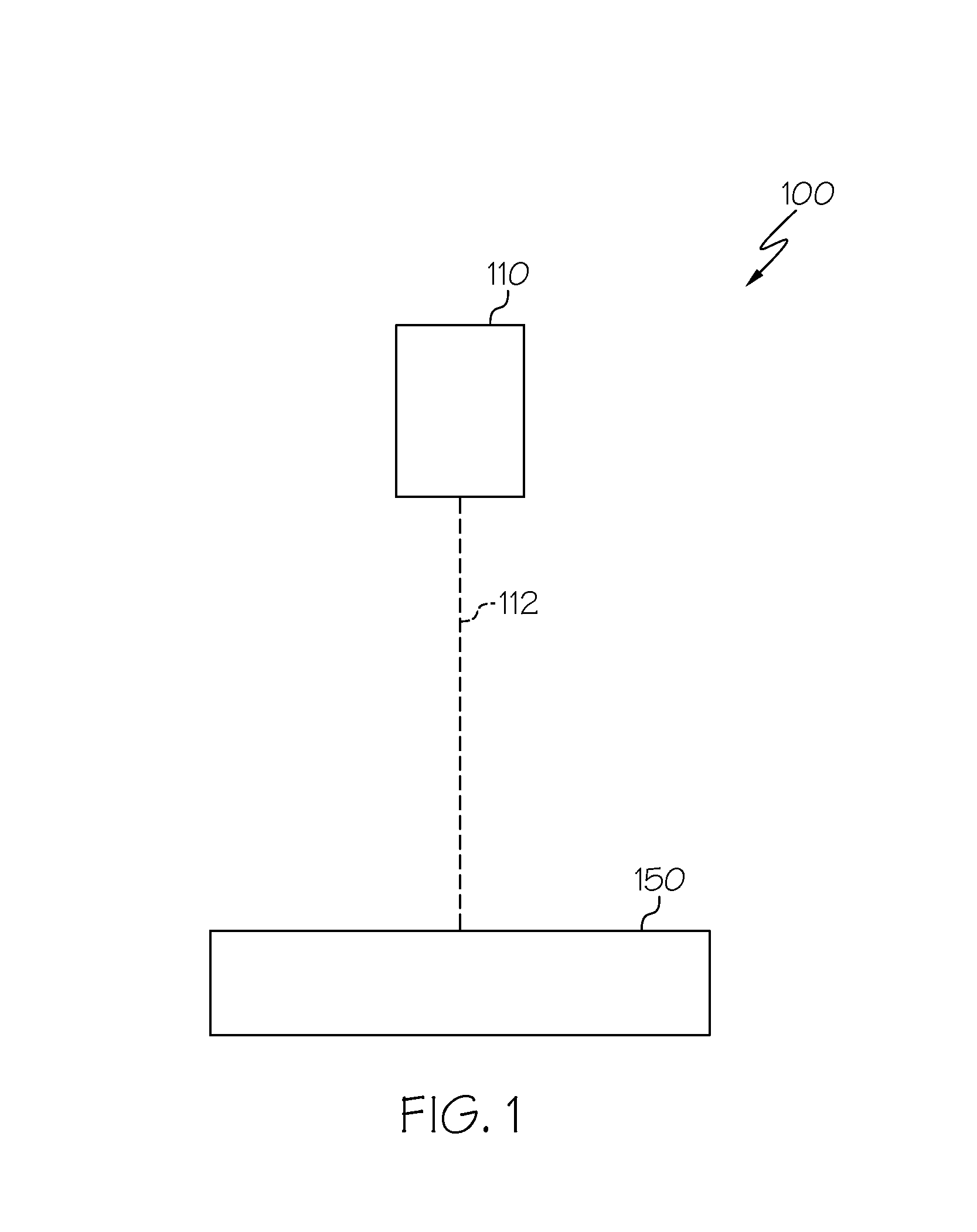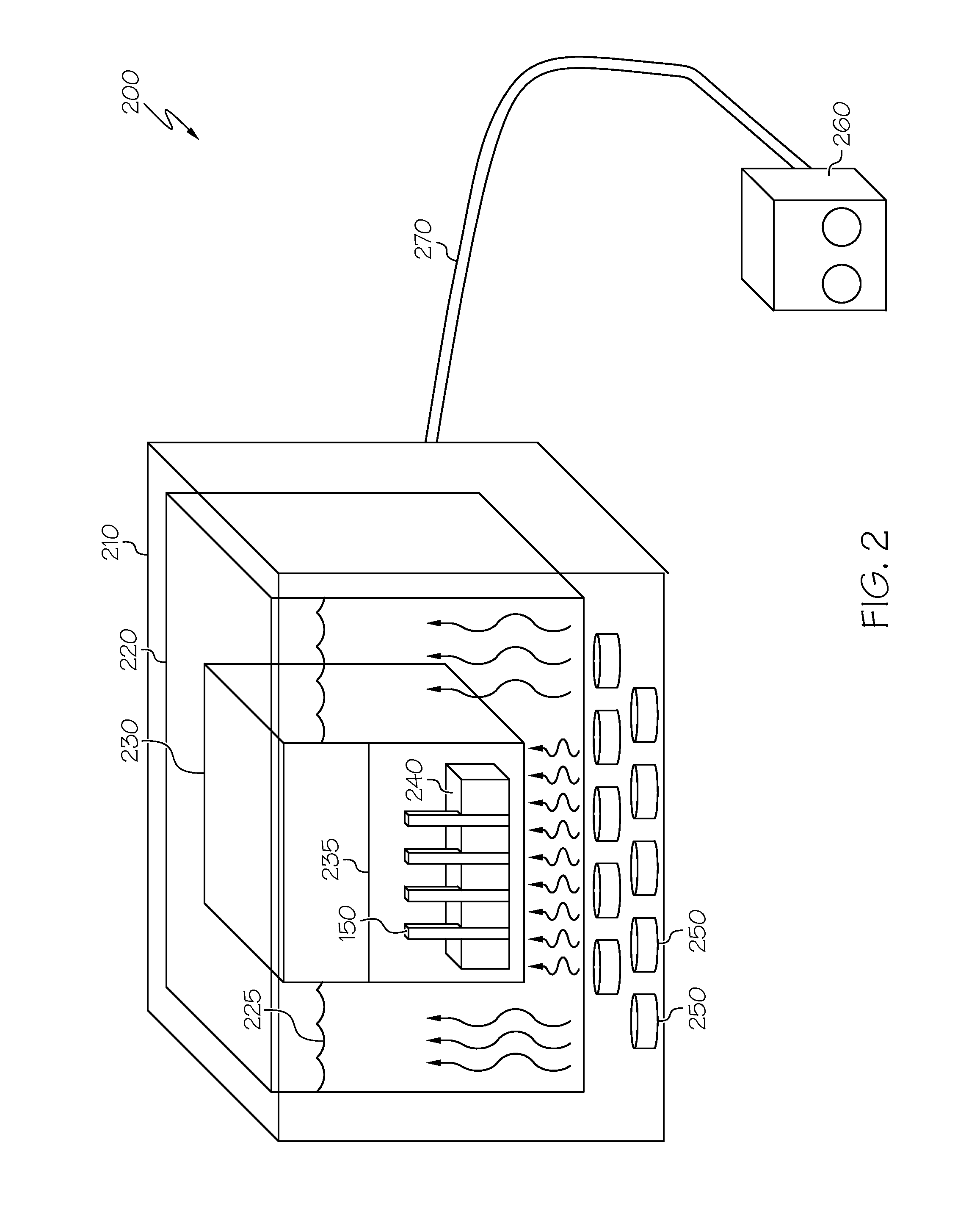Methods for forming vias in glass substrates
- Summary
- Abstract
- Description
- Claims
- Application Information
AI Technical Summary
Benefits of technology
Problems solved by technology
Method used
Image
Examples
example a-1
[0048]In this control example, four glass samples were etched without ultrasonic agitation. Four samples of Eagle XG© glass were obtained. Through via pilot holes were drilled through the glass samples using a laser beam. The thicknesses of the samples were first measured and recorded. The samples were etched in a one liter solution of HF and HNO3 using mechanical agitation but no ultrasonic application for a specified amount of time. The etch solution temperature was about 25±2° C. After thoroughly washing and drying the samples, the post etch thicknesses of the samples were measured again. To determine the hole quality and shape, the diameters of the holes on the incident surface (also referred to as entry holes), their waist diameters (e.g., the diameter halfway between the incident surface and exit surface), and the exit surface diameters were measured. Table 1, below, shows average diameter and average circularity for entry holes, exit holes, and waists for the vias of each of ...
example a-2
[0049]At least two samples of Eagle XG© glass were obtained. Through via pilot holes were drilled through the glass samples using a laser beam. After obtaining the thicknesses of the samples, they were etched in a one liter solution of HF and HNO3 in the presence of a 40 kHz ultrasonic field. The samples were also mechanically agitated. The initial etch solution temperature was about 25±2° C. After thoroughly washing and drying the samples, the post etch thicknesses of the samples were measured again. To determine the hole quality and shape, the diameters of the holes on the incident surface, their waist diameters, and the exit surface diameters were measured. The “40 kHz” column of Table 2, below, shows the measurements and evaluations (e.g., number of chipped entry holes, number of through holes that extended through the glass sample, etc.) for this example.
example a-3
[0050]At least two samples of Eagle XG© glass were obtained. Through via pilot holes were drilled through the glass samples using a laser beam. After obtaining the thicknesses of the samples, they were etched in a one liter solution of HF and HNO3 in the presence of a 132 kHz ultrasonic field. The samples were also mechanically agitated. The initial etch solution temperature was about 25±2° C. After thoroughly washing and drying the samples, the post etch thicknesses of the samples were measured again. To determine the hole quality and shape, the diameters of the holes on the incident surface, their waist diameters, and the exit surface diameters were measured. The “132 kHz” column of Table 2, below, shows the measurements and evaluations (e.g., number of chipped entry holes, number of through holes that extended through the glass sample, etc.) for this example.
PUM
| Property | Measurement | Unit |
|---|---|---|
| Frequency | aaaaa | aaaaa |
| Frequency | aaaaa | aaaaa |
| Frequency | aaaaa | aaaaa |
Abstract
Description
Claims
Application Information
 Login to View More
Login to View More - R&D
- Intellectual Property
- Life Sciences
- Materials
- Tech Scout
- Unparalleled Data Quality
- Higher Quality Content
- 60% Fewer Hallucinations
Browse by: Latest US Patents, China's latest patents, Technical Efficacy Thesaurus, Application Domain, Technology Topic, Popular Technical Reports.
© 2025 PatSnap. All rights reserved.Legal|Privacy policy|Modern Slavery Act Transparency Statement|Sitemap|About US| Contact US: help@patsnap.com



